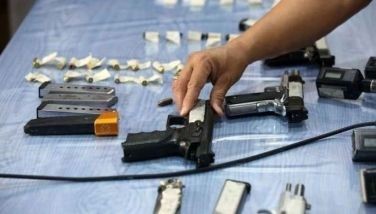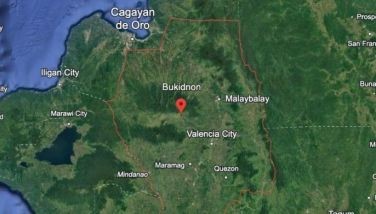BIMP-EAGA fosters closer ties with Australia
July 11, 2006 | 12:00am
DAVAO CITY — The Brunei, Indonesia, Malaysia and the Philippines-East ASEAN Growth Area (BIMP-EAGA) geo-economic grouping has moved to foster closer ties with Australia’s Northern Territory to further explore its vast market.
For years, Australia has been protective of its own interests and has not allowed the entry of products, mostly agriculture and construction materials, from BIMP-EAGA countries.
Except for Brunei Darussalam, BIMP-EAGA, which has a combined market of more than 50 million consumers, comprises the sub-national economies of East Indonesia, East Malaysia, and Mindanao and Palawan in the Philippines. It was formally created in 1994 to hasten development and growth of areas considered as the backwaters of each of their country’s economy.
Although the Northern Territory has been participating in major BIMP-EAGA activities, including business and investment conferences and trade exhibits, its participation was more of Australia selling its products to the EAGA nations rather the other way around. EAGA is also reportedly the biggest market of the Australian cattle and dairy industry.
BIMP-EAGA government officials and business leaders have long recognized the difficulty of penetrating the Australian market in spite of several representations made before the World Trade Organization against the said unfair trade practices.
According to the Mindanao Economic and Development Council (MEDCO), which acts as the Philippine secretariat to the geo-economic grouping, EAGA nations have remedied the situation by taking a more active stance in pursuing stronger relations with the Northern Territory dubbed as the gateway to the rest of Australia.
MEDCO noted that the sub-region’s government and business leaders have lately urged the Northern Territory to use the BIMP-EAGA Roadmap to Development 2006-2010 as its guide in its participation with various EAGA initiatives.
The Northern Territory has also been urged to open more trade opportunities with BIMP-EAGA as a test-bed in the new ASEAN-Australia-New Zealand Free Trade Area (AANZFTA) economic bloc.
The EAGA government and business leaders have agreed with Northern Territory officials to explore ways to simplify Customs, Immigration, Quarantine and Security (CIQS)-related rules and regulations in resolving issues on non-tariff trade barriers.
The CIQS cooperation with the Northern Territory shall involve the sharing and exchange of information on CIQS rules and regulations with individual EAGA countries and enhance existing CIQS agreements and arrangements among those in the growth area.
The Northern Territory, on the other hand, shall provide technical input on capability-building for EAGA quarantine officials.
A business portal shall also be put up to further expand the network of business establishments, including small and medium enterprises in the EAGA with those in the Northern Territory and the rest of Australia.
For years, Australia has been protective of its own interests and has not allowed the entry of products, mostly agriculture and construction materials, from BIMP-EAGA countries.
Except for Brunei Darussalam, BIMP-EAGA, which has a combined market of more than 50 million consumers, comprises the sub-national economies of East Indonesia, East Malaysia, and Mindanao and Palawan in the Philippines. It was formally created in 1994 to hasten development and growth of areas considered as the backwaters of each of their country’s economy.
Although the Northern Territory has been participating in major BIMP-EAGA activities, including business and investment conferences and trade exhibits, its participation was more of Australia selling its products to the EAGA nations rather the other way around. EAGA is also reportedly the biggest market of the Australian cattle and dairy industry.
BIMP-EAGA government officials and business leaders have long recognized the difficulty of penetrating the Australian market in spite of several representations made before the World Trade Organization against the said unfair trade practices.
According to the Mindanao Economic and Development Council (MEDCO), which acts as the Philippine secretariat to the geo-economic grouping, EAGA nations have remedied the situation by taking a more active stance in pursuing stronger relations with the Northern Territory dubbed as the gateway to the rest of Australia.
MEDCO noted that the sub-region’s government and business leaders have lately urged the Northern Territory to use the BIMP-EAGA Roadmap to Development 2006-2010 as its guide in its participation with various EAGA initiatives.
The Northern Territory has also been urged to open more trade opportunities with BIMP-EAGA as a test-bed in the new ASEAN-Australia-New Zealand Free Trade Area (AANZFTA) economic bloc.
The EAGA government and business leaders have agreed with Northern Territory officials to explore ways to simplify Customs, Immigration, Quarantine and Security (CIQS)-related rules and regulations in resolving issues on non-tariff trade barriers.
The CIQS cooperation with the Northern Territory shall involve the sharing and exchange of information on CIQS rules and regulations with individual EAGA countries and enhance existing CIQS agreements and arrangements among those in the growth area.
The Northern Territory, on the other hand, shall provide technical input on capability-building for EAGA quarantine officials.
A business portal shall also be put up to further expand the network of business establishments, including small and medium enterprises in the EAGA with those in the Northern Territory and the rest of Australia.
BrandSpace Articles
<
>
- Latest
- Trending
Trending
Latest
Trending
Latest
Recommended































